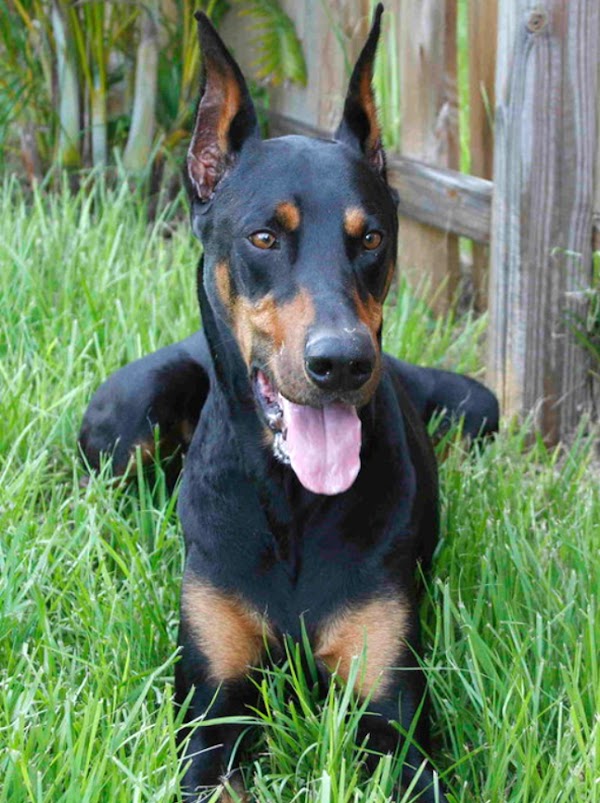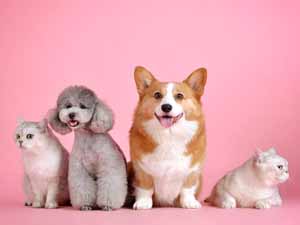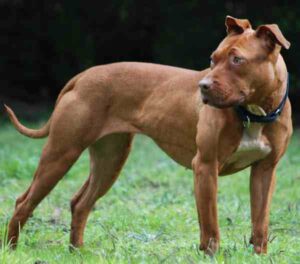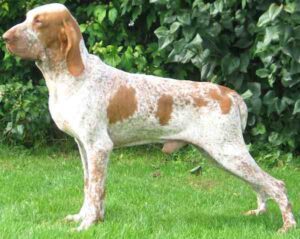The Doberman Pinscher dog is a medium-sized breed of domestic dog which are known to be intelligent, alert and tenaciously loyal companions and guard dogs. It is also known by some other names such as Dobermann, Doberman and Dobie.
The breed was originated from Germany. It was originally developed around 1890 by Karl Friedrich Louis Dobermann, a tax collector from Germany.
The history of the Doberman Pinscher dog breed is sometimes disputed by experts. However, it’s generally thought that these dogs were first bred in the 1880s.
With access to dogs of many breeds, Karl Friedrich Louis Dobermann got the idea to create a breed that would be ideal for protecting him. He set out to breed a new type of dog that would exhibit impressive stamina, strength and intelligence.
5 years after Dobermann’s death, Otto Goeller, one of the earliest breeders, created the National Doberman Pinscher Club and is considered to have perfected the breed (breeding and refining them in the 1890s).
The Doberman Pinscher dog breed is believed to have been created from several Different breeds of dogs that had the characteristics that Dobermann was looking for.
The exact ratios of mixing, and even the exact breeds that were used, remain uncertain, although many experts believe that the Dobermann Pinscher is a combination of several breeds including the Beauceron, German Pinscher, Rottweiler and Weimaraner.
The American Kennel Club believes the breeds utilized to develop the Dobermann Pinscher may have included the old shorthaired shepherd, Rottweiler, Black and Tan Terrier and the German Pinscher.[1]
The American Kennel Club ranked the Doberman Pinscher dog in the United States as the 12th most popular dog breed in 2012 and 2013.
Doberman Pinscher Dog Characteristics
The Doberman Pinscher dog is a medium-sized breed with beautiful appearance. It has a long muzzle. It stands on it’s pads and is not usually heavy-footed. Ideally, the breed has an even and graceful gait.
The ears of these dogs are cropped and posted traditionally, and the tail is docked. But these procedures are now illegal in some countries. The Doberman Pinschers have markings on the chest, legs, above the eyes, underneath the tail and muzzle.
These dogs have a short coat. And their common coloration are Black & tan, red & tan, blue & tan and fawn & tan.
Average body height of the mature dogs is between 27 and 28 inches at the withers for males, and between 25 and 27 inches for the females. Average live body weight of the mature dog is between 40 and 45 kg for the males, and between 32 and 35 kg for the females.

Temperament
The Doberman Pinscher dog is a super-intelligent breed and a super-active dog. They are extremely loyal, trustworthy, playful and fun-loving with family. They are natural protector who won’t hesitate to act when they think their family is under threat, but they are not aggressive without reason.
The Doberman Pinscher dogs generally like to be busy (both physically and mentally). They learn quickly, and training them is relatively easy. Because they can learn so fast.
Temperament of the dog is affected by a number of factors, including heredity, training and socialization. Puppies with nice temperament are curious and playful and willing to approach people and be held by them.
Like other dogs, the Doberman Pinscher dogs also require early socialization. Exposure to many different people, sights, sounds and experiences are great ways to socialize them, especially when they are young.
Lifespan
Average lifespan of the Doberman Pinscher dog is between 9 and 12 years.
Feeding
How much a mature dog eats depends on it’s size, age, build, metabolism and activity level. Dogs are individuals, just like people, and they don’t all need the same amount of food.
The Doberman Pinscher dogs are medium sized breed, and they are very active. So, their diet should be formulated for a medium sized breed with high exercise needs.
Generally 2.5 to 3.5 cups of high quality food will be enough for a mature dog. You can also consult with a vet in your area for better feeding recommendations.
Caring
Taking good care of the animals is very important for raising Doberman Pinscher dogs. You should always keep up with your dog’s regular vet checkups to detect any health concerns early. Your vet will be able to help you to develop a caring routine that will keep your dog healthy.
The Doberman Pinscher breed is best suited to a suburban or country home with room to roam. They are very active and need a lot of exercise daily.
They should not be left alone for long periods of time or relegated to the backyard as an outside dog.
They have a short coat. So, grooming the Doberman Pinscher dog is very easy.
Health
The Doberman Pinscher dogs are generally healthy. But like all other dog breeds, they are also prone to certain health conditions.
Their common health problems include albinoism, bloat, color mutant alopecia, cardiomyopathy, hip dysplasia, hypothyroidism, narcolepsy, progressive retinal atrophy and von willebrand’s disease. Always try to keep good contact with a vet in your area.
| Breed Name | Doberman Pinscher |
| Other Names | Also known by some other names such as Dobermann, Doberman and Dobie |
| Breed Size | Medium |
| Height | Between 27 and 28 inches at the withers for males, and between 25 and 27 inches for the females |
| Weight | Between 40 and 45 kg for the males, and between 32 and 35 kg for the females |
| Good as Pets | Yes |
| Climate Tolerance | All climates |
| Color | The breed’s common coloration are Black & tan, red & tan, blue & tan and fawn & tan |
| Lifespan | Between 9 and 12 years |
| Good for Children | Yes |
| Rarity | Common |
| Country/Place of Origin | Germany |






